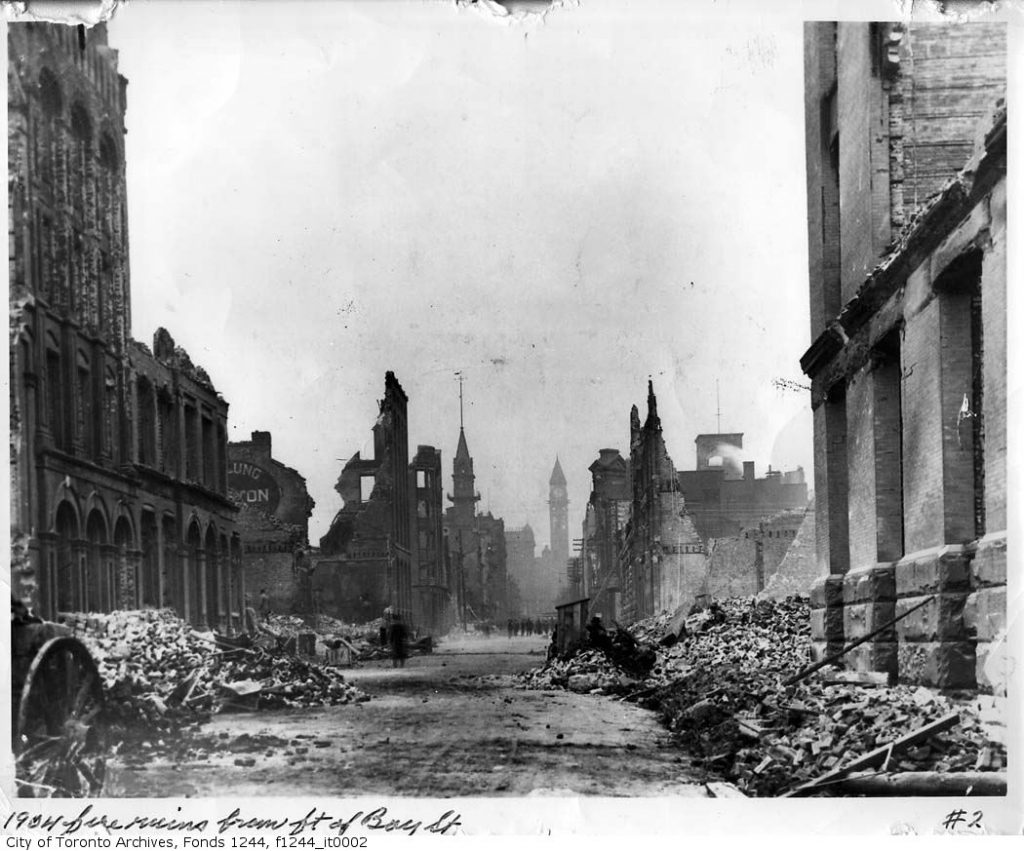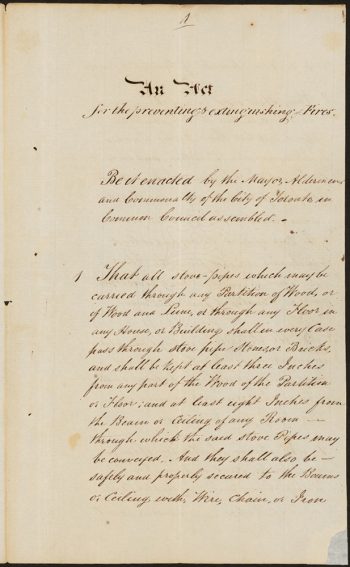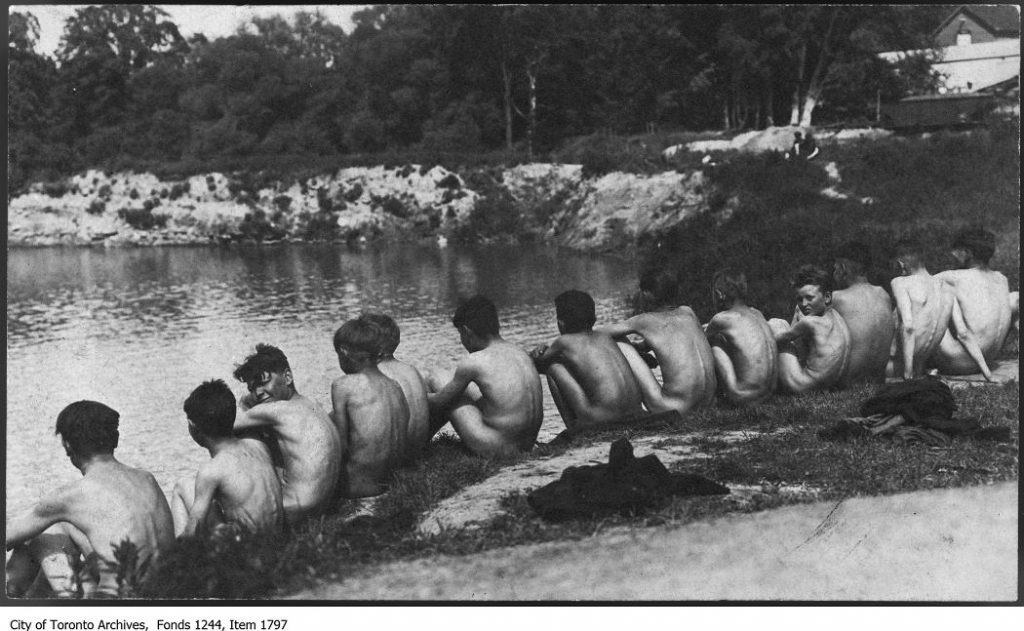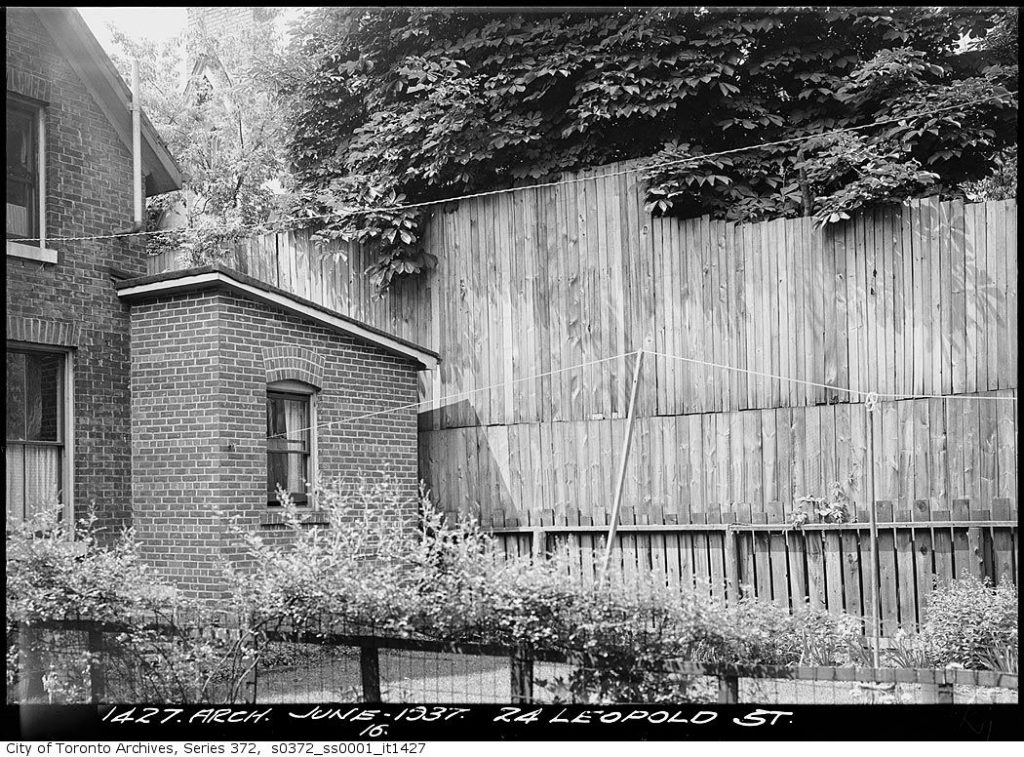
In 2014, the City of Toronto will reach a milestone: the passing of the 200,000th by-law created by the City of Toronto or its predecessor municipalities since Toronto became a city in 1834. By-laws are created by Council to regulate a wide variety of situations and behaviours – just a few being fires, weeds, domestic animals, non-domestic animals, building standards, restaurants, and how much of your body must be covered by a bathing suit. Here are a few examples from our city’s history.

In 1834, the Committee on Fire and Water warned of the danger posed by a city built largely of wooden buildings, but noted that “an Attempt to enforce generally the Erection of brick or stone Buildings in place of Wood, would be effectively to retard the progress of Improvement” of the rapidly growing city. City Council decided to pass a by-law to regulate safety standards for the installation of stoves and stovepipes, disposal of ashes, burning of trash, and similar matters. This may also be the first attempt by Council to regulate smoking, as it also outlawed using cigars or pipes around flammable materials. Firing guns and setting off fireworks within the city limits were also prohibited. This by-law, the city’s first (An Act For The Preventing And Extinguishing Of Fires) was passed on May 5, 1834.

In 1890, Toronto passed the first of several by-laws designed to regulate “morality.” Prohibited activities included panhandling, selling alcohol to “any child, apprentice, or servant” without the permission of the parent or master, being drunk in public, gambling, swearing, keeping or visiting a brothel, and “indecency,” which covered what we would now define as pornography. Public nudity was also forbidden, including nude swimming between six in the morning and ten at night–which seems to have left the door open for nighttime skinny-dipping. The penalty for breaking the law was a fine of up to fifty dollars, at a time when a general labourer might earn ten dollars a week.

Have you ever had an argument with a neighbour involving a fence? Unfortunately, fence disputes are quite common and Toronto has by-laws to regulate fence construction and use. We hope you never have to face the situation shown in this image from our Public Works photograph collection. The neighbours of the residents at 24 Leopold Street in Parkdale erected a “spite” fence which appears to be at least twelve feet high in some places. By consulting the City’s By-law Status Register database it is possible to trace the by-law that regulated fences back in 1937 when this photo was taken. That by-law stated that fences were to be no higher than 5½ feet. Clearly someone did not read the by-law!

Knowledge, as they say, is power, and the By-law Status Register gives you knowledge. If you ever have any questions about Toronto’s by-laws, this database resource is where you should look first. The register includes current by-laws and old ones from all the pre-amalgamation municipalities. So far, 144,000 of the total 216,000 by-laws have been entered into the database, and many of these also have scanned by-laws attached.